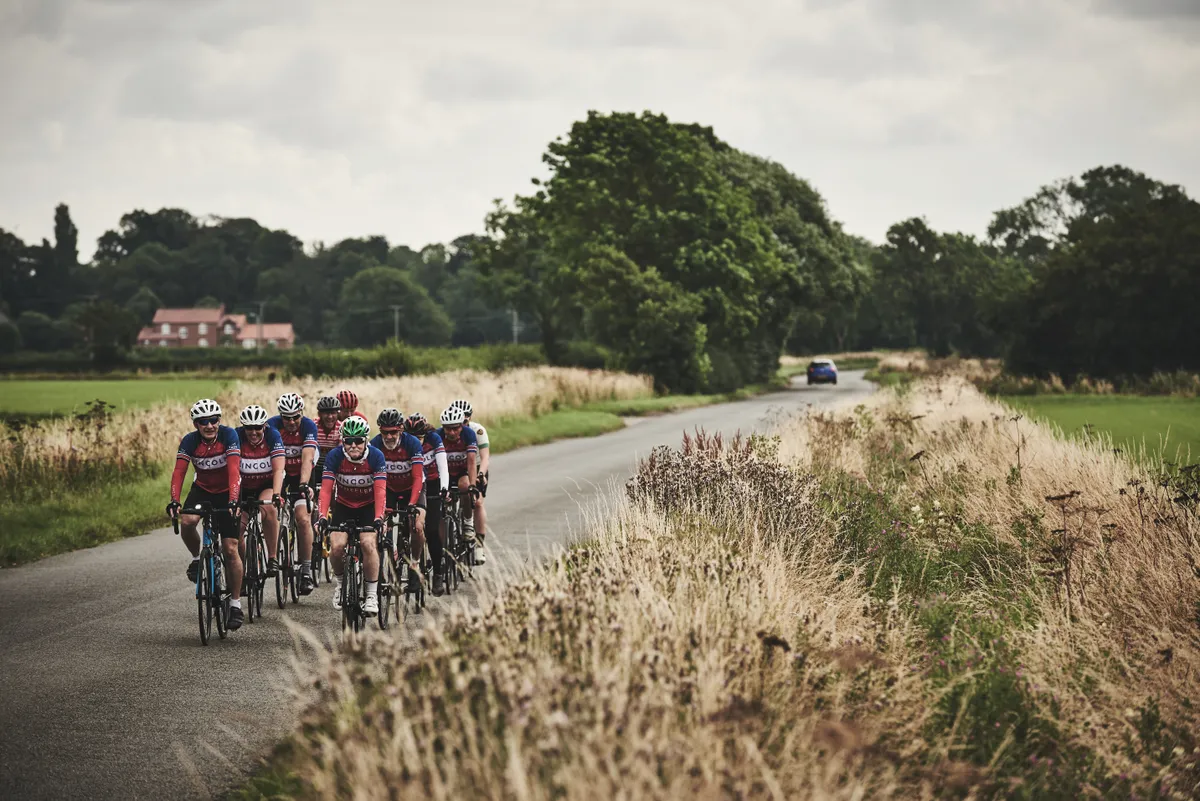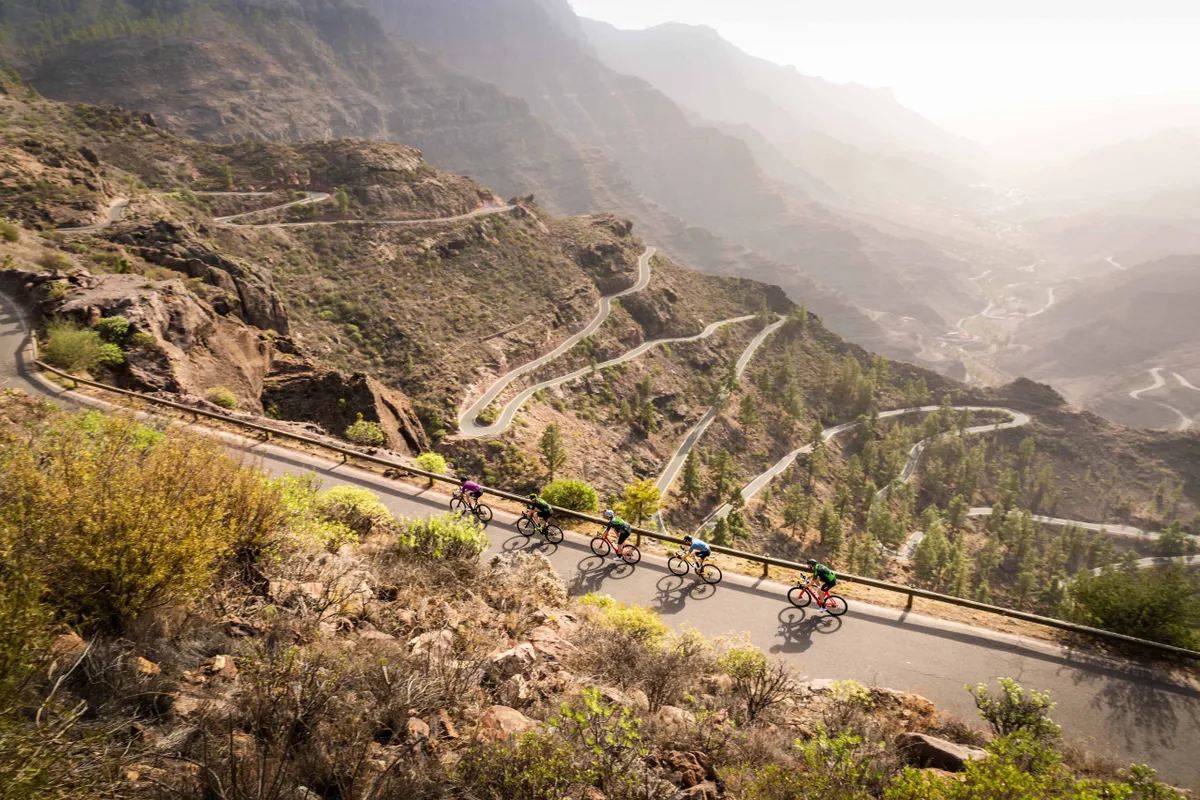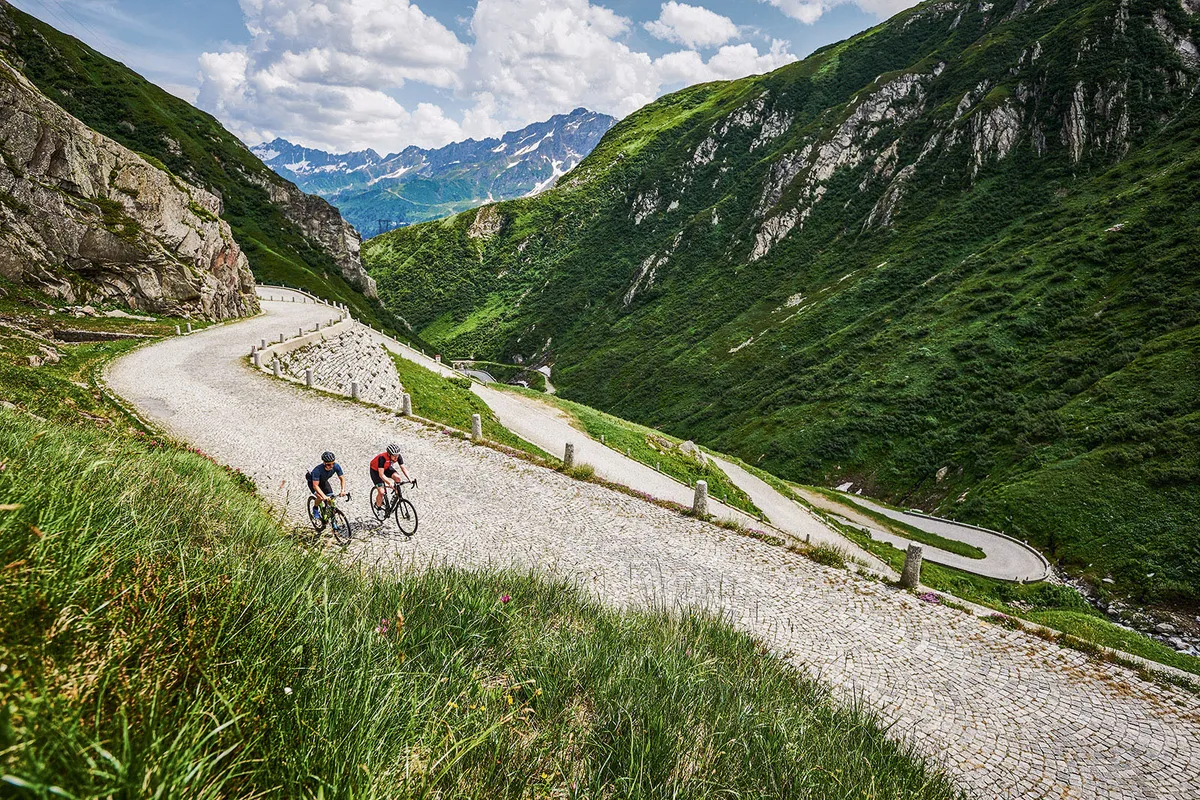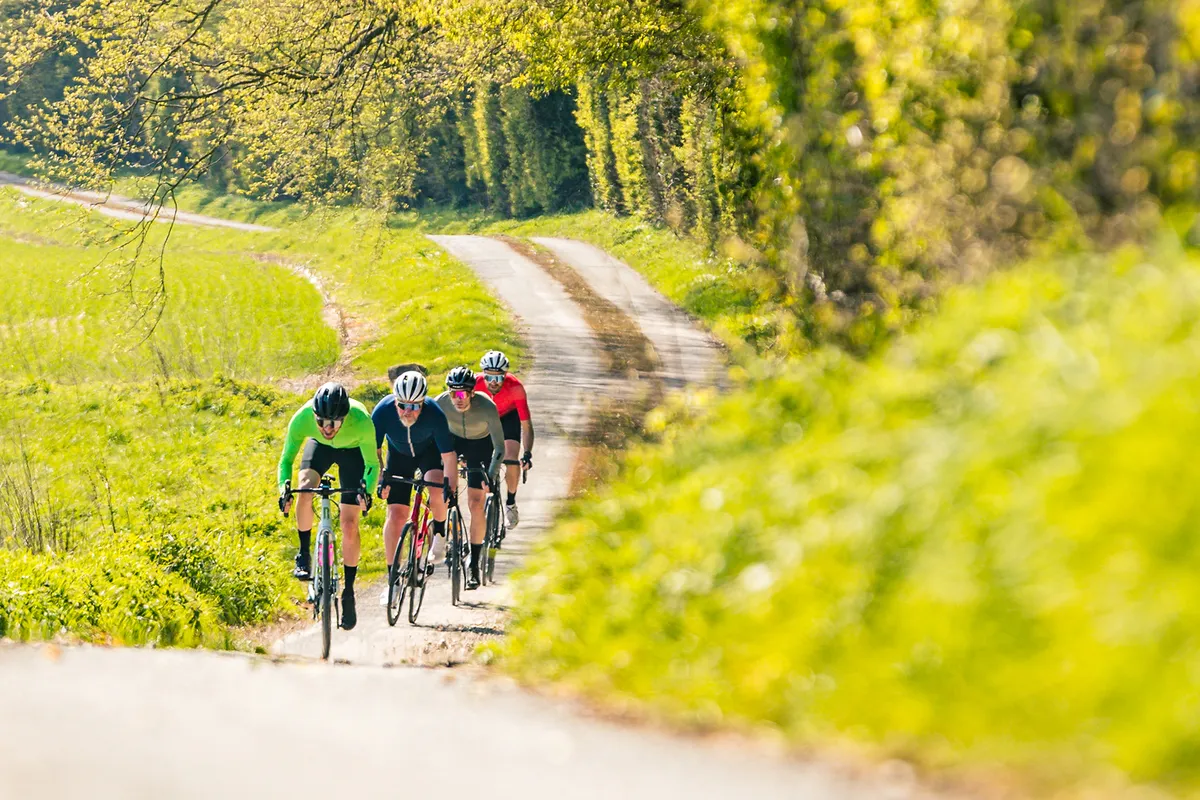Riding in a group safely and efficiently is one of the key skills of cycling.
Group riding helps you travel faster, which is handy when you're taking on a sportive or conquering a century ride.
You also need to know how to ride in a group to receive the social benefits of cycling.
However, your first few goes at group riding can be a confusing experience.
We've got all the essential information and techniques you need in order to stay safe, ride with confidence and have an enjoyable time.
The advice focuses on road cycling. But if you're lucky enough to ride wide, uninterrupted dirt paths in a bunch, you could also apply these group riding principles to gravel riding.
Basic group riding technique

When the road allows, you'll usually be riding two-abreast in a double pace line. This enables everyone behind the two leading riders to shelter from the wind. Ignore drivers' complaints: in the UK, the updated Highway Code encourages cyclists to ride two-abreast in most circumstances.
The time each rider spends on the front is usually decided before the ride starts. Tired riders will take shorter turns.
If you’re riding on the front, keep your speed as smooth and controlled as possible because everyone is riding close to one another. This means no grabbing handfuls of brake or fast accelerating, particularly out of corners. Always have your hands covering the brakes, either on the hoods or the drops.

Half-wheeling – nudging your front tyre ahead of the rider beside you – is poor group-riding etiquette. It can come across as a passive-aggressive signal you wish to up the pace.
Instead, always try to keep your handlebars level with the person next to you. If unsure about pacing, match the speed of more experienced riders.
Starting out, it's best to keep at least a wheel length between your front wheel and the back wheel in front. As you progress, you can close this gap.
But don't overlap your wheel with the person in front, because the wheels may make contact with the slightest gust of wind or bump in the road. Try to keep your head up and look ahead for hazards or signals from the other riders.
When approaching hills, it's important to widen the gap between cyclists to allow for deceleration.
Avoid getting out of the saddle when someone’s right behind you. Your back wheel will drop back about half a bike length. This could cause them to swerve or brake sharply. Before you want to stand up, point both elbows out simultaneously: this is the universal signal.

On downhills, front riders should try to keep pedalling, otherwise riders benefitting from their draft will have to brake. Before longer descents, consider letting everyone go down at their own speed and regroup at the bottom.
Communicating hazards

Ensuring everyone in the group knows about what's going on, is aware of any hazards and is happy communicating with the others is very important.
The front riders are responsible for warning the group about upcoming hazards (such as potholes), approaching cars, corners or junctions. The signals should pass all the way back through the group.
When on the front, make sure you always let the rest know if you slow down or brake.
If you aren't familiar with hand gestures and calls, make sure you check these with the rest of the group before you set off.
It’s up to the riders on the back to let those in front know what’s behind. They should call if a car is behind them or about to overtake.
On narrow lanes, this enables the bunch to single out when it’s safe for the vehicle to pass or remain two-abreast when it is not. Elsewhere, front riders will know not to move towards the middle of the road when a car is passing.

Call clearly (but not too loudly) and give notice of hazards as early as you can to allow time for the group to react. Keep your pace even with the rider beside you and you'll be set.
Advanced group riding skills
If you’re comfortable with the basic skills, take your group riding up to the next level with more advanced techniques. These techniques are ideal for road racing, breakaways and team time trials.
The two most commonly used advanced techniques are the ‘through and off’ and the single pace line. These keep a high pace over flat or rolling terrain, and most groups alternate between the two, depending on the number of riders and the type of road.
The through and off technique

This technique is ideal for groups of six or more riders on roads where the local laws allow cyclists to ride two abreast. It’s an efficient way of keeping the group's average speed high.
A fast ‘through and off’ is a flowing machine consisting of a fast line and slow line. It’s a lot like a double pace line, except that riders continually rotate. Before starting, it’s essential you agree which side to move up the group (usually on the right or outside).
By taking short turns at the front, it’s possible to push the pace high, which is why this technique is often used in breakaways during races.
The most important action takes place at the front of the double pace line. As the rider in the fast line draws level with the rider in the slow line, the slow rider should ease off the pedals slightly.
This permits the fast rider to move over and call ‘clear wheel’ when there’s space to slot in front of them.
The rider who was behind the fast line rider will then do the same, pulling through then easing off once in the slow line. Turns on the front are hard but brief, lasting between 5 and 10 seconds depending on the speed of rotation.

Riders in the slow line will begin to drift backwards in relation to the fast line. Once the last rider in the fast line has gone past your front wheel, get back on the gas, move across and accelerate back into the fast line.
Call ‘last rider’ when you rejoin the fast line so the next person in the slow line knows it’s safe to pull into the fast line once you are clear.
Smoothness is key to keeping this safe and efficient. The changes in pace are subtle; slight increases or reductions in effort. The slow line rider shouldn't ease off completely and the fast line rider shouldn't surge. Their aim is to maintain, not increase the train’s momentum.
This technique gives a brief moment of recovery to each rider as they take the slow line, before increasing their efforts again in the fast line.
Rotation can be clockwise or anti-clockwise and can depend on the wind direction. For example, if the wind is coming from the left, the group will rotate anti-clockwise, and vice versa.
‘Through and off’ needs practice and effective communication to reward you with a sense of team effort and speed gains.
The single pace line

The single pace line is the ideal technique for groups with six riders or fewer, or on roads where riding two-abreast isn’t suitable.
Turns on the front are usually longer than with the ‘through and off’ technique, which allows a greater recovery time. Time spent in the wind depends on the skill and stamina of the rider. A stronger rider may do 60 seconds; a weaker rider may do 20 seconds.
Ride within yourself. Overdoing it on the front can send you flying out the back after pulling off if you don’t recover in time to hold the wheel. The group goes faster if riders leave the front before fatigue causes their speed to drop.
As before, the front rider is driving the pace along in a smooth and consistent style. Once a rider finishes on the front, they will pull out of the pace line and fall back down the line, without easing off the pedals completely.

After the former lead rider has dropped back level with the rear of the group, the back-marker will call ‘last rider’. They can then slot in behind them without overlapping wheels.
In the line, each rider stays on the wheel of the rider in front until they peel off. At this point, the rider will need to increase their effort in a smooth and consistent manner to maintain the speed of the previous rider.
Both techniques require excellent team work, trust and cooperation. Once mastered, riders become valued cogs in a satisfying high-speed, mile-swallowing machine.





